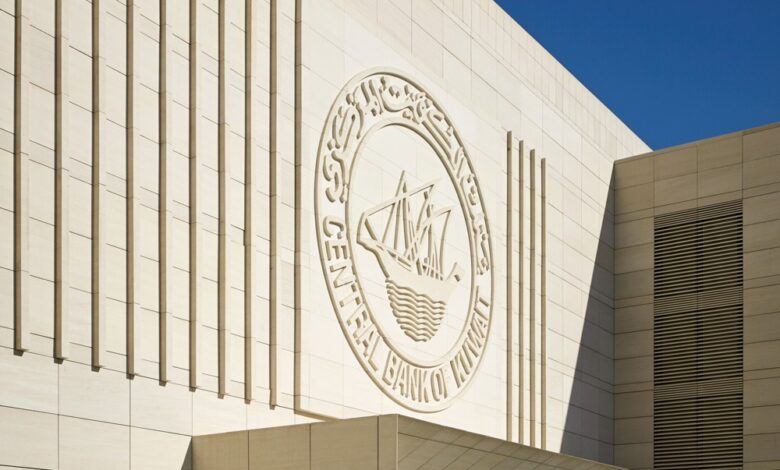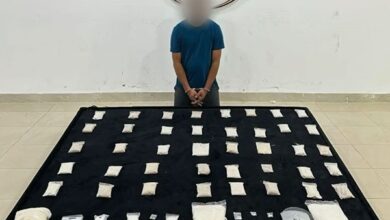Central Bank asks local banks to keep 3 per cent of customers deposits in dinars
The Central Bank of Kuwait has directed local banks to keep at least 3% of customer deposits in dinars in current accounts due to declining interest rates on large deposits from government entities and major private sector companies.

• For individual and smaller corporate customers with deposits of KD 5 million or less, the interest rates for the same period are close to about 4%, while dollar deposits can yield rates as high as 5%.
• The Central Bank’s dinar exchange rate policy, linking it to a balanced basket of key foreign currencies, has been praised by IMF experts as suitable for Kuwait’s economic conditions.
• In a climate of slowing credit growth, banks are offering lower rates to attract significant deposits while balancing large and smaller funds to maintain participation in the Central Bank’s liquidity surplus withdrawal program.
The Central Bank of Kuwait has instructed local bank officials to maintain at least three percent of customers’ total deposits in dinars within their current accounts, according to Al Rai newspaper.
According to the data, the value of current bank accounts with the Central Bank is approximately KD 3.4 billion.
Sources pointed out that the Central Bank did not mandate banks to adhere to a specific percentage; rather, it allowed each bank to determine its own discretion and actual needs. However, it ultimately required banks to maintain the aforementioned minimum, raising questions about the effectiveness of this oversight.
Additionally, banking sources explained the regulatory movement in this direction, noting that the primary reason for this change is the decline in the interest rates offered on deposits by government entities and large private sector companies in dinars (typically exceeding fivemillion dinars).
Recently, these rates have dropped to between 3.25 and 3.5 percent over three-month periods, which is lower than the rates offered on what is known as “counter REIT.”
For individual and smaller corporate customers with deposits of five million dinars or less, the interest rates for the same period are close to about 4 percent, while dollar deposits can yield rates as high as 5 percent.
Enhancing the dinar’s value
To enhance the dinar’s value, attractiveness, and purchasing power, the Central Bank aims to raise the interest rate on its deposits within healthy limits. As part of this policy, it has decided that banks must keep at least 3 percent of their customers’ total deposits in dinars within their current accounts. This regulatory effort is designed to support monetary and financial stability and bolster lending to the national economy’s key sectors.
Sources explained that this approach will increase banking demand for deposits from government agencies and major companies in dinars. They noted that the Central Bank has hinted to treasury officials that banks not adhering to this regulatory directive will risk a reduction in their share of the bonds and lending instruments used to manage bank liquidity levels. Meanwhile, the Central Bank will maintain its traditional approach to withdrawing surplus liquidity from banks that are compliant.
Dinar’s attractiveness
The sources pointed out that the Central Bank’s exchange rate policy, which links the dinar to a balanced basket of foreign currencies that have significant financial and commercial relationships with Kuwait, has been praised by IMF experts as an appropriate strategy for the current state of the Kuwaiti economy.
Additionally, the Central Bank’s policy aims to maintain the dinar’s attractiveness and support lending to key sectors of the national economy.
Regarding why some banks are reducing the interest rates they offer on deposits from government agencies and major companies in dinars, sources attribute this to a decline in banks’ appetite for attracting large deposits due to weak credit growth.
Attracting significant deposits is often costly in a climate of slowing credit growth, prompting banks to offer lower rates. This situation likely leads banks to seek a balance between attracting large deposits and managing smaller funds to ensure their ongoing participation in the Central Bank’s liquidity surplus withdrawal program.
Local banks’ claims on the Central Bank decline
Local banks’ claims on the Central Bank of Kuwait decreased during the first eight months of 2024 by 2.35 percent, amounting to approximately KD 173.9 million, reaching KD 7.196 billion last August, compared to KD 7.37 billion in December. This also represents a fivepercent drop, or KD 378.3 million, year-on-year, down from KD 7.574 billion in August 2023.
Government deposits with local banks jump
Government deposits with local banks increased by 10.16 percent, or KD 477.3 million, rising to KD 5.172 billion in August, compared to KD 4.694 billion in December 2023. On an annual basis, these deposits rose by 15.72 percent, or about KD 702.7 million, up from KD 4.469 billion in August 2023.
Conversely, deposits from public institutions with banks decreased by 6.6 percent, or KD 502.7 million, falling to KD 7.119 billion compared to KD 7.621 billion in December. However, on a monthly basis, these deposits increased by 3.3 percent, or about KD 228.4 million.












